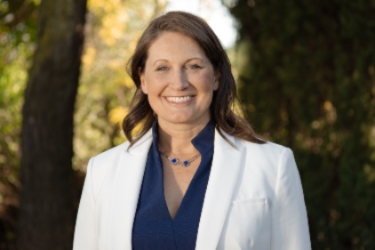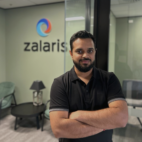How Microsoft deployed SAP SuccessFactors Employee Central across 109 countries
Meet the Authors
Key Takeaways
⇨ SAP SuccessFactors Employee Central replaced 200 different tools
⇨ Implementation started in three pilot countries, Canada, Norway and Sweden, before moving to larger offices in India, the US, APAC and Australia
⇨ Microsoft had to run SAP SuccessFactors and the old legacy system in parallel after not choosing to do a ‘big bang’ implementation
When Satya Nadella took the reins as Microsoft CEO in 2014, the company saw its culture and performance management processes transform when it shifted from using employee ratings and forced grading curves to a more employee development-centric approach, according to Microsoft director of HR strategy and innovation Divya Sharma.
Speaking at Mastering SAP Collaborate in Melbourne in May this year, Sharma shared the major component to enabling Microsoft’s employee development shift – deploying SAP SuccessFactors Employee Central across the company’s offices in 109 countries.
Microsoft’s SAP SuccessFactors journey started in 2018, when the tech giant had 100,000 employees globally.
Explore related questions
“It was an implementation that required a lot of agility because [Microsoft] was hiring so much and there was a lot going on in the industry at that time,” Sharma said.
Microsoft previously had a fragmented HR tool ecosystem with around 200 different tools, resulting in data inconsistencies and integration challenges.
“We are a company of engineers. Anytime there was a need for some new capabilities or tool, we got engineers together and they built them,” Sharma said. “Over a period of time, we had this huge mess of tools after tools so if somebody were to ask us what the primary source of a data point, it became impossible to answer because data was being generated in so many places. There was no central place to bring it all together.”
Aside from centralising and streamlining HR processes, the goal of the SAP SuccessFactors deployment was to also enhance data integrity and improving the employee experience.
The implementation team interviewed Microsoft employees and leaders to understand pain points and future needs. Infrastructure was migrated to Microsoft Azure, legacy tools were retired and replaced with the same functionality within SAP SuccessFactors.
“We knew that we need to stay connected with our employees and our users on an ongoing basis,” Sharma said.
“We had different focus groups, different communities that were meeting almost on a weekly or a biweekly basis. We made sure that everyone who was associated with this work understood that we are establishing a foundation for more globally consistent employee experiences. We want to enhance the employee experience by standardising core processes and improving data integrity.”
Considering the company’s size, Microsoft chose to go with an iterative approach to the SAP SuccessFactors Employee Central implementation, instead of a ‘big bang’ approach.
Microsoft chose three pilot countries – Canada, Norway and Sweden to gather insights from different legislations and geographies.
“We felt these countries would give us a good idea on how this solution scales to our marketing, product and HR teams,” Sharma said.
“Canada is very US-like in a lot of ways, so it gave as a good idea on how the solution would fare in the US. Norway and Sweden meanwhile gave us a flavour of Europe, because legislation is very complicated. We started with those countries and then we continued to have a few cycles where we kept refining the solution.”
The next country chosen was India as it was Microsoft’s second largest location after the US with 28,000 employees, compared to the 500-600 from the three pilot countries.
“Going from 500 to 28,000 employees was a big jump for us, but we felt if we did India, it would clear the way for the US and other markets,” Sharma said.
In 2020, the implementation then moved to the US, Asia-Pacific and Australia, and the following year saw it implemented across 92 countries simultaneously. In 2023, the system went live for external staff and acquired companies.
At the end of the implementation, Microsoft’s employee headcount had grown to 225,000, up from 100,000 at the start.
“Key to this stage was maintaining our old legacy system throughout the journey. We couldn’t get rid of some of the legacy tools just yet, because half the population was still using them,” Sharma said.
“We had to run two parallel systems. We used to jokingly call it the land of two suns because both of them were core, and you had to keep both of them in sync all the time.”
Sharma said maintaining two parallel kinds of HR core systems for almost five or six years was the biggest downside of not doing a big bang.
“There was an IT expense to maintain them but a much bigger expense was how to keep the data in sync between the two systems,” Sharma added. “We had to stand up a team of eight to 10 people who were constantly auditing the two systems and then trying to keep them in sync.”
Microsoft has maintained a mix of first-party and third-party solutions, retaining some custom solutions that provided the company a high level of differentiation, like its rewards and compensation system, which Sharma called “very niche and very unique”.
“On a project of this scale, the primary goal for most companies is to standardise because that’s where you will get your cost efficiencies,” Sharma said.
“You will get user experience and better data, but we also know the reality is that not everything can be globalised or standardised.
“We started the project by putting together a global team that had representation from most regions and countries of 300 to 350 people meeting for three weeks at the Microsoft headquarters in Redmond.”
The team worked to develop a new process for hiring, transfers, terminations and more, followed by in-country workshops where they would sit down with local HR and operations teams.
“Our HR digitalisation journey started in 2018 and it’s been a long journey,” Sharma said. “We are still on that journey since then and it is still not complete. What is changing now fundamentally is the incremental way in which we were approaching the journey has changed to a more revolutionary approach with AI.”
Sharma said the team found from the conversations with Microsoft employees and leaders that the best place to start the journey centred around what the future would look like working at the company.
“People are not looking for us to solve their pain points from today, but rather they are looking for us to set the stage for the future,” he said. “If you want to set the stage for the future, then we need to know where we are headed. Where will we be in two to three years? What kind of experiences we need?”
“This exercise of talking to the right people, understanding what the vision is, where are we headed and documenting it goes a long way.”








